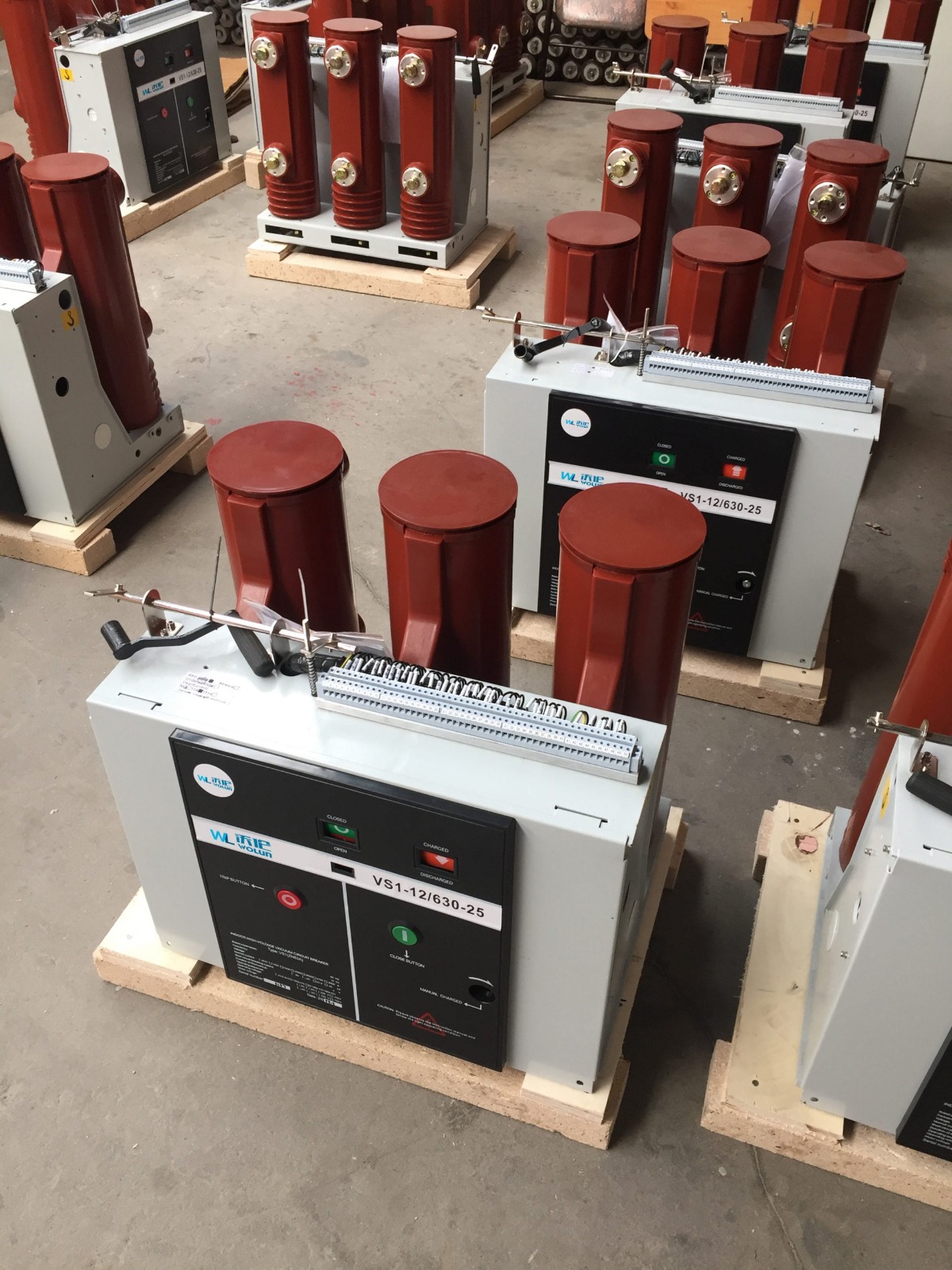
Vacuum circuit breakers are among the most reliable and efficient electrical protection devices used in modern power systems. A Vacuum circuit breaker plays a vital role in ensuring the safety and stability of electrical networks by interrupting fault currents and protecting equipment from damage. Regular testing of a vacuum circuit breaker is essential to maintain its performance, extend its lifespan, and ensure uninterrupted service. In this article, Aierway explains in detail how to test a vacuum circuit breaker for reliability and efficiency.
Understanding the Function of a Vacuum Circuit Breaker
A vacuum circuit breaker operates by extinguishing the arc inside a vacuum chamber when an electrical fault occurs. Unlike oil or air circuit breakers, the vacuum circuit breaker uses a vacuum as the arc-quenching medium, which offers faster interruption and minimal maintenance. The design of a vacuum circuit breaker allows for longer operational life and higher reliability, making it a preferred choice for medium-voltage applications.
Importance of Testing a Vacuum Circuit Breaker
Testing a vacuum circuit breaker ensures that it performs effectively under all conditions. Electrical equipment can degrade over time due to mechanical wear, environmental conditions, or electrical stress. By conducting routine tests, technicians can identify potential problems early, maintain system reliability, and ensure that the vacuum circuit breaker functions correctly when needed most.
Types of Tests for a Vacuum Circuit Breaker
Testing a vacuum circuit breaker involves several steps and methods. Each test checks a specific parameter of the device to verify its operational reliability and safety. Below are the most important tests recommended for maintaining a vacuum circuit breaker.
1. Visual Inspection
Before conducting electrical tests, perform a detailed visual inspection of the vacuum circuit breaker. Check for mechanical damage, contamination, or oil and dust deposits. Ensure that all connections, terminals, and operating mechanisms are clean and intact. A visual inspection helps detect early signs of deterioration in a vacuum circuit breaker.
2. Contact Resistance Test
Contact resistance testing measures the resistance across the closed contacts of a vacuum circuit breaker. High resistance indicates poor contact or surface contamination, which can lead to overheating and energy loss. Using a micro-ohmmeter, measure the resistance and compare it with the manufacturer’s standard. Maintaining low contact resistance ensures reliable performance of the vacuum circuit breaker.
3. Insulation Resistance Test
The insulation resistance test checks the quality of insulation within the vacuum circuit breaker. Using a megger, measure the insulation resistance between phases and between each phase and ground. Low insulation resistance indicates moisture or contamination that can lead to insulation failure. Regular insulation testing helps ensure the safety and reliability of the vacuum circuit breaker.
4. Vacuum Integrity Test
The vacuum integrity test verifies whether the vacuum chamber inside the vacuum circuit breaker is still sealed properly. A compromised vacuum can result in inefficient arc extinction. The test is often performed using a high-voltage AC test or a specialized vacuum bottle test set. A well-maintained vacuum integrity ensures the long-term reliability of the vacuum circuit breaker.
5. Timing Test
The timing test measures the opening and closing times of the contacts in the vacuum circuit breaker. Accurate timing ensures that all poles operate simultaneously and that the breaker responds quickly during faults. Use a circuit breaker analyzer to record the timing results. Proper synchronization improves the operational reliability of the vacuum circuit breaker.
6. Mechanical Operation Test
A mechanical operation test assesses the physical movement of the vacuum circuit breaker components. This test checks for smooth operation, proper lubrication, and mechanical alignment. The test should include several open and close cycles to evaluate the breaker’s mechanical endurance. Regular mechanical testing helps prevent unexpected failures in a vacuum circuit breaker.
7. High-Potential (Hi-Pot) Test
The high-potential test determines the dielectric strength of the vacuum circuit breaker’s insulation system. Apply a high voltage across the insulation and monitor for leakage currents or breakdowns. This test helps identify weak points in the insulation, ensuring that the vacuum circuit breaker can withstand high operating voltages safely.
8. Contact Erosion Measurement
Over time, the contacts inside a vacuum circuit breaker may erode due to repeated arcing. Measuring contact wear is critical for maintaining proper performance. Use a contact erosion gauge or manufacturer-recommended method to determine wear limits. Replacing eroded contacts extends the life of the vacuum circuit breaker.
Interpreting Test Results of a Vacuum Circuit Breaker
After performing all tests, compare the results with the manufacturer’s recommended values. Deviations from the standard indicate potential problems that require maintenance or replacement. Documenting the results ensures that you can track performance trends and make informed maintenance decisions. Reliable data ensures that the vacuum circuit breaker continues to operate safely and efficiently.
Maintenance Tips for a Vacuum Circuit Breaker
To keep a vacuum circuit breaker in excellent working condition, perform regular cleaning, lubrication, and testing. Store spare parts properly, and avoid exposing the breaker to dust and moisture. Schedule periodic tests according to the manufacturer’s maintenance guidelines to ensure long-term reliability.
Advantages of Regular Testing of a Vacuum Circuit Breaker
Routine testing provides several advantages:
- Increases operational reliability and safety.
- Reduces the risk of unexpected outages.
- Enhances equipment lifespan.
- Ensures compliance with safety standards.
- Minimizes costly repairs and downtime.
Regular testing not only improves reliability but also guarantees that the vacuum circuit breaker performs efficiently under load and fault conditions.
Conclusion
Testing a vacuum circuit breaker for reliability is an essential part of preventive maintenance in any power system. From visual inspections to high-potential and timing tests, each procedure ensures that the breaker functions safely and effectively. By following the guidelines provided by Aierway, you can maintain the performance and extend the service life of your vacuum circuit breaker. Regular maintenance and testing are the keys to ensuring a dependable and efficient electrical protection system. The more consistently you test your vacuum circuit breaker, the greater its reliability and safety in real-world operation.




